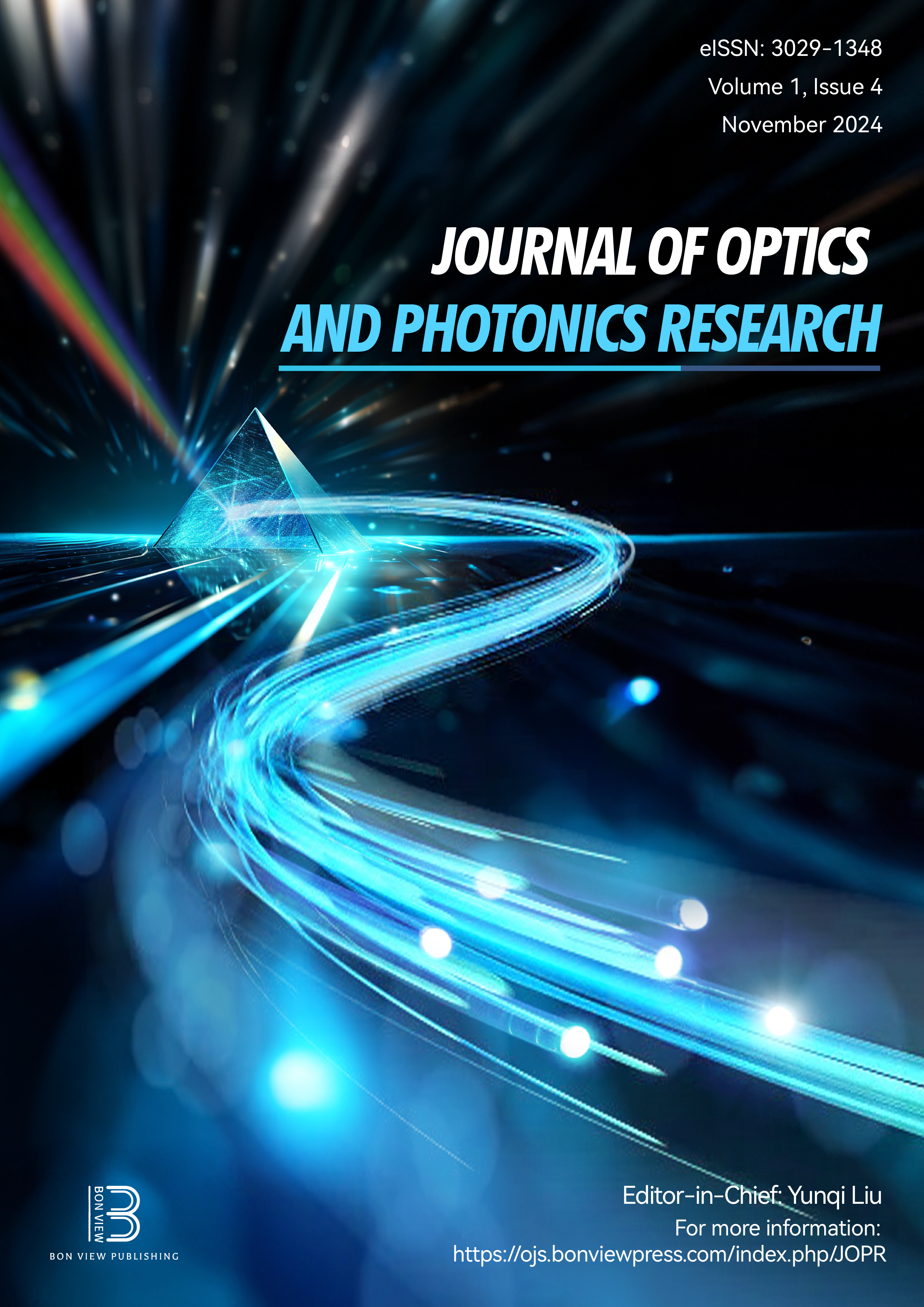A Compact THz Photometer for Solar Flare Burst Studies from Space
DOI:
https://doi.org/10.47852/bonviewJOPR42021899Keywords:
THz, photometer, solar flare, solar flux unitAbstract
Recent solar flare observations reveal the presence of THz components having a few orders of magnitude higher amplitude than the radio frequency and microwave radiations in the solar flare spectrum. This feature makes it remarkably beneficial for the detection of solar flares of low magnitudes such as Geostationary Operational Environmental Satellite (GOES) Class C, and M flares. Hence, space agencies including National Aeronautics and Space Administration (NASA) and European Space Agency (ESA) are gearing up with THz instruments for solar flare observations. In line with this, Laboratory for Electro-Optics Systems has completed the development of a photometer that operates in continuum THz band, from 1.5 to 15 THz. The entire electro-opto-mechanical design was carried out to realize a compact, light-weight, and power-efficient photometer to meet the size, mass, and power constraints posed by inherent resource limitations of experimental satellite platforms such as Nanosatellite, Microsatellite, and Polar Satellite Launch Vehicle's 4th Stage Orbital Platform (PS4-OP). A Cassegrain optical configuration was designed to collect the sun radiation with an aperture effective area of 0.0027 m2 with ceramic low-pass filters and resonant mesh filter for selective perception of THz radiation, rejecting the huge background of visible and near infrared with a spectral selectivity of 107:1. Sensitivity of the photometer was estimated to be 41.5 K/mV in 1.5–15 THz band by calibration using a blackbody radiation source. The radiometric resolution of the payload is 125 solar flux unit (SFU) (1 SFU = 1 × 10−22 Wm−2 Hz−1 ). The payload was successfully developed and space-qualified for its deployment in Nanosatellite or PS4-OP platform.
Received: 17 October 2023 | Revised: 29 January 2024 | Accepted: 23 February 2024
Conflicts of Interest
The authors declare that they have no conflicts of interest to this work.
Data Availability Statement
Data are available from the corresponding author upon reasonable request.
Author Contribution Statement
M. A. Sumesh: Conceptualization, Methodology, Software, Validation, Formal analysis, Investigation, Data curation, Writing – original draft, Writing – review & editing, Visualization, Supervision, Project administration. S. P. Karanth: Conceptualization, Methodology, Formal analysis, Investigation, Resources, Writing – review & editing, Visualization, Supervision, Project administration. K. V. Sriram: Validation, Visualization, Supervision, Project administration.
Downloads
Published
Issue
Section
License
Copyright (c) 2024 Authors

This work is licensed under a Creative Commons Attribution 4.0 International License.


